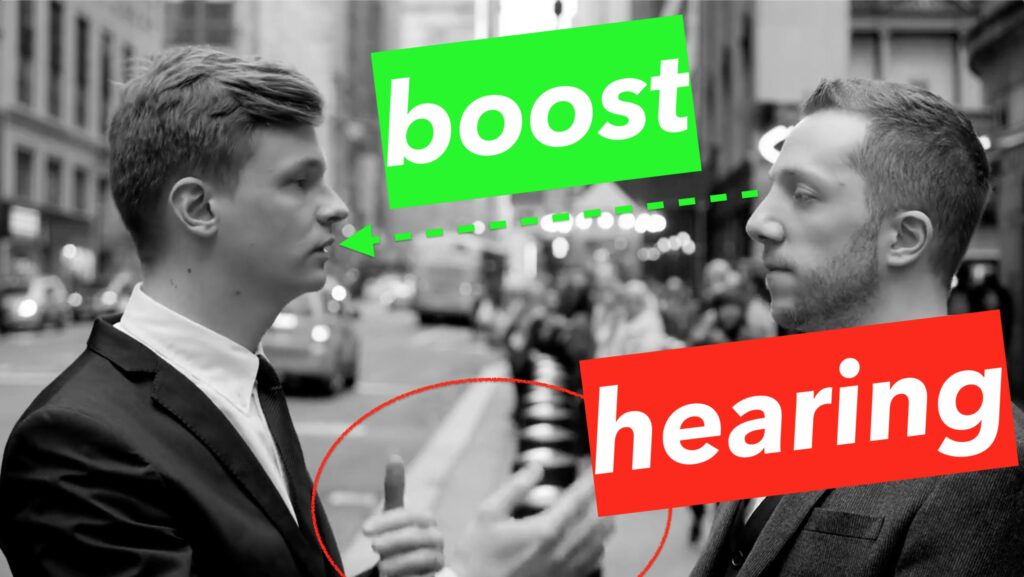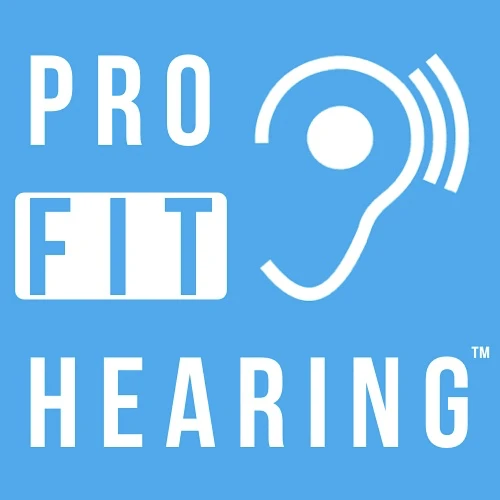Boost Hearing in Noise – Top 10 Tips for Hearing Loss

Boost Hearing in Noise – Top 10 Tips for Hearing Loss
Boost Your Hearing in Background Noise with today’s 10 tips. Hearing in noise is challenging for everyone, especially if you have hearing loss. Today you’ll learn ten easy and practical ways to improve your hearing and conversations in noisy places.
SUBSCRIBE to our YouTube channel for weekly videos!
Hi, I’m Dr. Derek – audiologist, audio engineer, and musician with ProFitHearing.com bringing you the best insight in today’s latest hearing aids, headphones, and audio technology to improve your life. If you have concerns about your hearing, always consult with your local physician or audiologist.
If you’re interested in hearing aids, check out my free eBook HERE.
1/ Maximize Auditory & Visual Cues
First, always make sure you are facing the person you are speaking with. This will help you hear and understand speech sounds.
The high frequency speech sounds which are responsible for speech clarity and understanding are directional by nature, so facing the other person is important to maximize these auditory cues.
Visual cues provide additional context to your conversations. You can read lips and take advantage of non-verbal cues which include gestures, body language, and facial expressions.
A person’s facial expressions help communicate the emotion and intent of their message. Gestures and body language can reinforce what the person is trying to communicate.
These contextual cues assist in our ability to communicate by reducing our reliance on solely spoken words. Use of auditory and visual cues will maximize our ability to hear, understand, and connect with others around us.
2/ Focus Your Attention
Be an active listener and pay attention to what the other person is saying. Reduce other distractions around you and silence electronic devices that might grab your attention like your phone or tablet.
Show an interest in what the other person is saying, actively engage with them, and respond appropriately to what’s being said so that you can build trust and rapport with that person.
Being focused on the other person will help you make use of all the verbal and non-verbal cues that are available to you.
3/ Reduce Background Noise
Whenever possible, reduce any additional sources of background noise around you. Turn down the music or television while you’re having a conversation, if possible.
Seek out restaurants or public spaces that have better acoustics like low ceilings and carpeting which allow for less sound reverberation.
Spaces with hard surfaces like concrete floors will contribute to sound reverberation and background noise.
You can also close doors and windows that may be allowing in additional noise and distractions.
4/ Adjust Your Positioning
Move in closer to whoever you’re speaking with to increase the overall volume of the person’s voice, and move away from sources of background noise.
This improves what is called the signal to noise ratio or SNR ratio. You want to have a positive SNR ratio for the best sound quality.
A positive signal to noise ratio means that speech is louder than the environmental noise around you. This makes it easier to understand what’s being said.
5/ Repeat & Rephrase
If you’re having difficulty understanding in noise, ask the person to repeat themselves or rephrase what they said.
If you repeat back the parts of the message that you understood, it can be less frustrating to the other person.
An example could be “Where did you say you were going on Saturday?” Sorry, I misunderstood.” Don’t just automatically say “Huh or What”?
6/ Speak clearly
There are several ways to improve the clarity of your speech and the speech of your conversation partner.
First, make sure that you are facing the person you’re speaking with to optimize auditory cues.
Slow down your speech and pause occasionally for emphasis. Clearly enunciate your words and speak at an adequate volume so the other person can easily hear what you’re saying.
Use proper vocal intonation by varying your tone and pitch, and remember to not mumble while you’re speaking.
7/ Take Breaks
If you’re having a longer conversation in a noisy place and you’re feeling tired, take an occasional break.
Straining to hear in background noise can be exhausting, since it requires more listening effort and focus.
You can take your conversation outside where it’s quieter and where there’s less people around to help reduce listening fatigue.
8/ Get a Hearing Test
If you’ve tried all of these tips and you’re still having significant difficulty hearing and understanding speech, you may be experiencing hearing loss.
Ask an audiologist to evaluate your hearing, so you’ll know whether or not you have hearing loss.
If you’re a hearing aid candidate, your audiologist can assist you with the selection of an appropriate device to help treat your hearing loss.
Identifying and treating hearing loss will make it easier to communicate in noisy situations.
9/ Try Hearing Aids
A hearing aid can be used to amplify the soft sounds that you have difficulty hearing. This can improve the overall clarity of words.
Hearing aids have additional features like directional microphones and noise reduction technology to help you hear your best in noisy places.
Make the most of today’s latest hearing aid technology, so that you can connect with others around you and enjoy conversation again.
10/ Use Hearing Protection
If you are having difficulty understanding speech in noise, you may have some degree of hearing loss even a mild loss.
You can use hearing protection when you’re around loud sounds to help prevent increased hearing difficulty over time.
Take the best care you can of your hearing, so that you can continue to enjoy conversation in the most challenging of listening situations.
Which of these tips will you start using today? Let us know in the comments and consult a local physician or audiologist if you have concerns about your hearing. If you’re interested in learning more about today’s latest hearing aid technology, go to https://www.youtube.com/profithearing and check out all the videos on our YouTube channel.
-Dr. Derek
